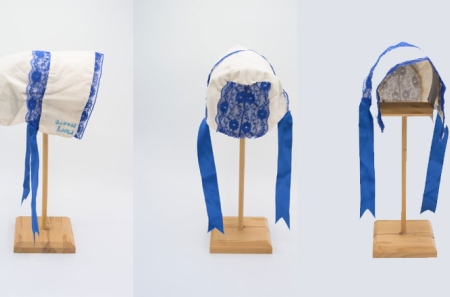
Digital Repository of Ireland Now Supporting 3D Viewing Capabilities
11 July 2023The Digital Repository of Ireland (DRI) is delighted to announce significant advancements to the Repository, which now supports 3D viewing capabilities.
As a trusted digital repository (TDR) for Ireland’s cultural heritage digital data, DRI is committed to broadening access to culture and advancing collective efforts to preserve 3D models of cultural heritage sites and historic buildings for sustained access. We have been working to support our members in preserving 3D cultural heritage data with the potential for reuse in domains such as education, sustainable tourism, and cultural creative sectors.
DRI published its first 3D object in 2020 – a 3D model of a face shield used as personal protective equipment during the COVID-19 pandemic, along with photographs of the resultant 3D-printed face shield frame. We have since made improvements to support more file formats so that we can increase the number of 3D objects in the Repository.
The Repository now handles seven 3D file formats with proficiency:
- OBJ (Wavefront Object): Employs geometric data, encompassing vertices, vertex normals, and texture coordinates, to accurately represent 3D objects.
- STL (Standard Triangle Language or Standard Tessellation Language): Utilises a concise list of vertices and triangular faces to depict the model’s geometry.
- PLY (Polygon File Format): Provides comprehensive information, including vertex positions, vertex colours, vertex normals, and face connectivity, to ensure a detailed representation.
- DAE (COLLADA – Collaborative Design Activity): Harnesses the power of an XML-based file format to encapsulate essential 3D geometric data such as vertices, polygons, textures, materials, and transformations.
- GLTF (GL Transmission Format): Incorporates a wide range of crucial data, such as geometry, materials, textures, animations, and other pertinent information, within a single GLTF file.
- GLB: Offers an optimised binary version of the GL Transmission Format (glTF), guaranteeing efficiency and compactness.
- FBX: Embraces the proprietary 3D file format developed by Autodesk, enabling seamless storage of geometry data, including vertices, polygons, normals, and texture coordinates.
Further developments to the Repository include the implementation of measures to expedite loading times and ensure swift rendering on any computer (note: render time will vary according to computer power and internet speed).
Of these recent improvements, DRI Software Developer Murilo Dias said:
“These advances are a testament to our commitment and dedication to pushing the boundaries of innovation to deliver solutions and elevate the experience of our valued users.”
Future Plans
Going forward, the team at DRI aim to further improve the Repository by augmenting user experience with features exclusively tailored to 3D works. Upcoming developments include:
- Zoom functionality accessible through the tool panel, allowing users to examine models with enhanced precision.
- Full-screen view for a truly immersive and uninterrupted visualisation experience.
- User-friendly skin customization tool, empowering individuals to personalise the appearance of models to their preference.
- Implementation of progressive rendering techniques, ensuring a seamless and progressively refined display of assets.
- Ability to retain the original skin, preserving the authentic visual representation of the models.
- Seamless integration of animations, breathing life into our 3D assets and enriching the overall experience.
- Smart asset display feature, to limit the displayed assets based on specific size criteria, optimising browsing efficiency.
DRI will further support the preservation of high-quality 3D digital assets through our participation in Twin it! 3D for Europe’s Culture, a campaign by the European Commission and the Europeana Initiative, which aims to accelerate 3D data in the common European Data Space for cultural heritage.



